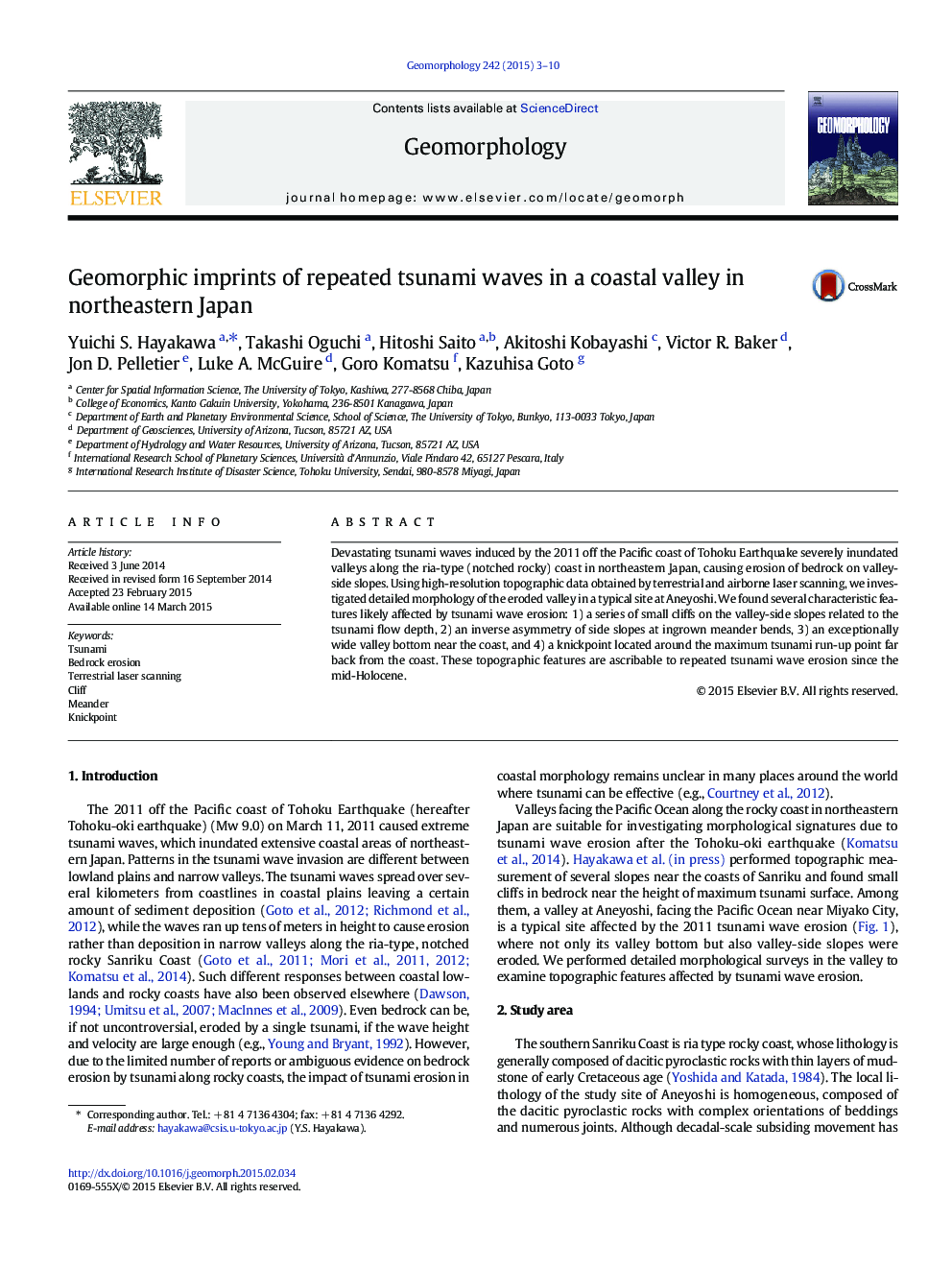| Article ID | Journal | Published Year | Pages | File Type |
|---|---|---|---|---|
| 4684211 | Geomorphology | 2015 | 8 Pages |
Devastating tsunami waves induced by the 2011 off the Pacific coast of Tohoku Earthquake severely inundated valleys along the ria-type (notched rocky) coast in northeastern Japan, causing erosion of bedrock on valley-side slopes. Using high-resolution topographic data obtained by terrestrial and airborne laser scanning, we investigated detailed morphology of the eroded valley in a typical site at Aneyoshi. We found several characteristic features likely affected by tsunami wave erosion: 1) a series of small cliffs on the valley-side slopes related to the tsunami flow depth, 2) an inverse asymmetry of side slopes at ingrown meander bends, 3) an exceptionally wide valley bottom near the coast, and 4) a knickpoint located around the maximum tsunami run-up point far back from the coast. These topographic features are ascribable to repeated tsunami wave erosion since the mid-Holocene.
